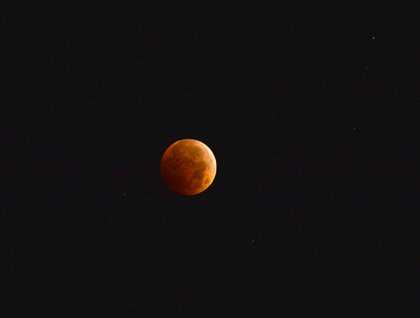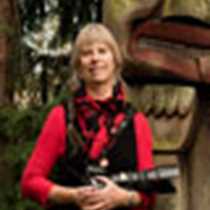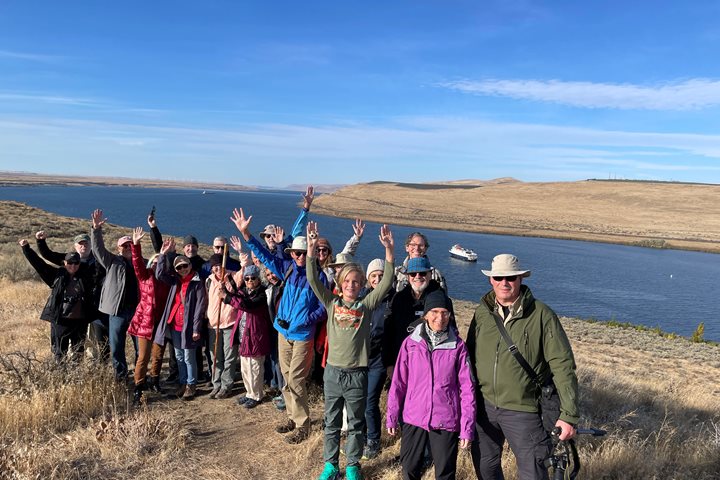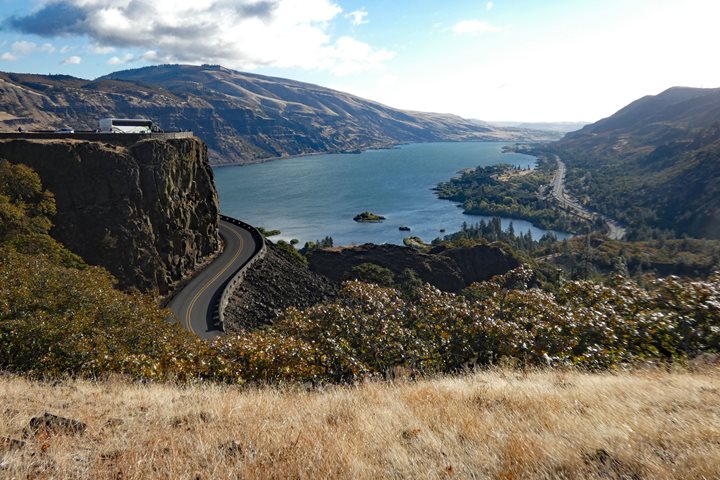The day began early for many of us on board National Geographic Sea Lion. A wake-up call went round the ship at 3:00am for all those interested in rising very early to see the second blood moon of 2014. Our trip had continued following in the footsteps of so many people who have called this river home, explored it, damned it and reclaimed its beauty and history – all being celebrated tonight, as the second in a series of four full moons arriving within six months of each other, rose over the small marina where we were docked. This tetrad, which began in April of 2014 and will continue through September of 2015, consists of four lunar eclipses AND blood moons, which can only occur during a full moon.
Because our ship sat quietly in the Hood River Marina, with searingly clear and dry skies, watching this uncommon celestial event from the bow and stern of the vessel provided theatre seats for watching the full cycle of a complete lunar eclipse. This one is particularly important, due to its name and position just after the fall equinox. The moon was very close to the planet and this second blood moon would be 5% larger than the one in April, similar in size to the super moons of the summer. The burnt metal color came into full armor at approximately 3:40am, where it remained for another hour. To quote CNN Science: “The brilliant hues of a blood moon come from the edges of the sun around the periphery of the earth, catching the atmosphere. It’s essentially a global sunset shining on the moon, which has to be in the right position to catch those rays.”
Slowly, the opposite side of the full moon began to turn back to white as the shadow of the earth moved away, making room for a lovely pink, orange, and red sunrise. Reluctantly, our ship began to wake up for our day. It would be a busy one...after the usual full breakfast we boarded coaches and made our way a short distance to the Columbia River Gorge Discovery Center. Most of our late morning was spent exploring exhibits beautifully laid out, depicting the life and diversity of the people who call this gorge home. From the Discover Center there were myriad options for the remainder of the morning. Bike rides, long walks and a history/photo walk of the small town of The Dalles, well-known in the Inland Pacific Northwest for its murals, painted on many of the buildings.
Returning to National Geographic Sea Lion, where lunch was waiting, we had a brief moment to recharge and then board buses heading to our afternoon destination of Maryhill Museum, built in the 1920s by Sam Hill an eccentric entrepreneur who was also extremely forward thinking! He wanted to design a small Quaker colony hidden away in this remote area along the Columbia River. Unfortunately he could not get many people interested in living so far removed from the comfort of their established communities. He then turned his beautifully designed building into a place that could house a very unusual collection of Rodin sculpture, phenomenal chess sets from Indonesia and Persia and one of the best collections of Native American baskets on the west coast of the United States. We ended our visit to Sam Hill’s estate with a visit to the Stonehenge Peace Memorial, dedicated to those who died in World War I from Klickitat County.
From our early morning hours watching the blood moon, which is said to open up barriers between worlds and allow each of us to remember those we have lost, to the solemn centennial remembrance of veterans of World War I, our historian Jim Rawls read a poem by Wilfred Owen, a young English poet. He was killed on November 4, 1918, just one week before the end of the war.
“Anthem for Doomed Youth” - Wilfred Owen
What passing-bells for these who die as cattle?
Only the stuttering rifles’ rapid rattle
Can patter out their hasty orisons.
No mockeries now for them; no prayers nor bells;
Nor any voice of mourning save the choirs,--
The shrill, demented choirs of wailing shells;
And bugles calling for them from said shires.
What candles may be held to speed them all?
Not in the hands of boys, but in their eyes
Shall shine the holy glimmers of goodbyes.
The pallor of girls’ brows shall be their pall;
Their flowers the tenderness of patient minds,
And each slow dusk a drawing-down of blinds.







